As I prepare each morning to speak with superintendents, chief academic officers, and other district-level leaders through virtual and in-person presentations, there is an imperative that is always in the forefront of my mind. What is that imperative, you might ask? Illiteracy.
Though we have limited time in each day, we must all remain focused and diligent on this critically important topic that impacts millions of children.
As much as educators, business leaders, and philanthropic community purport to be advocates of literacy, we have yet as a nation to formalize and finalize two critical instructional leadership acts: (1) operationally define literacy and cement the constituent elements of a true, diagnostic and prescriptive approach to literacy development; and (2) make available to all teachers the tools and training they desperately need to help their students to read consistent with developmental expectations and beyond.
What does it mean to be literate? How is literacy being defined in your district? How do we describe the finish line that we want students to cross? How do we know when students have crossed it? And by the way, literacy attainment cannot be defined by Lexile score or a standardized test score.
Literacy is characterized by a set of behaviors. A successful reader demonstrates three distinct behaviors, with automaticity — without being prompted.
A literate individual can (1) decode or pronounce words fluently and encode or spell fluently; (2) go beyond decoding and encoding and make sense of words conceptually; and (3) consume a variety of informational and literary texts and consequently engage in an evidence-based conversation about texts through speaking and writing.
With literacy and literacy outcomes defined, I have just a few more questions. Has your district identified and provided teachers with the resources and training they need to successful get their students to the literacy finish line? We must. Too much is at stake.
What are these resources?
I strongly believe that teachers must have unfettered access to key “reading to learn” materials necessary to transfer knowledge related to: (1) the relationships between and among the 26 letters, 44 phonemes, 144 graphemes; (2) word families (3) sight words; (4) Latin and Greek word parts; and (5) point of use annotation. It is equally critical that teachers have access to “reading to learn” resources aligned to grade-level expectations so that students have opportunities to learn the universal concepts of literacy (i.e., citing textual evidence, inferencing, determining main topic, determining main idea, summarizing, identifying text structures, determining author’s purpose, analyzing author’s argument).
What about training? Teaching children to read is as much as science as it is an art. Once teachers understand the science that underpins the process of effective teaching of reading, their unique and artful approaches will emerge and children will not only meet expectations, they will exceed them.
If we want to build teachers’ knowledge and capacity relative to the science and art of teaching children to read, training cannot be episodic. It must be ongoing, personalized, and deliberative. America, let’s align our human and capital resources with our goals and objectives for literacy.
For more of Dr. Dickey’s thoughts on this topic, read The Integrated Approach to Student Achievement– Second Edition. The book is available exclusively on our website: www.educationalepiphany.com. To hear Dr. Dickey and special guests speak about critical topics in literacy and education, subscribe to The Epiphany Exchange Podcast here! If you would like to connect with Dr. Dickey email us at educationalepiphany@gmail.com

